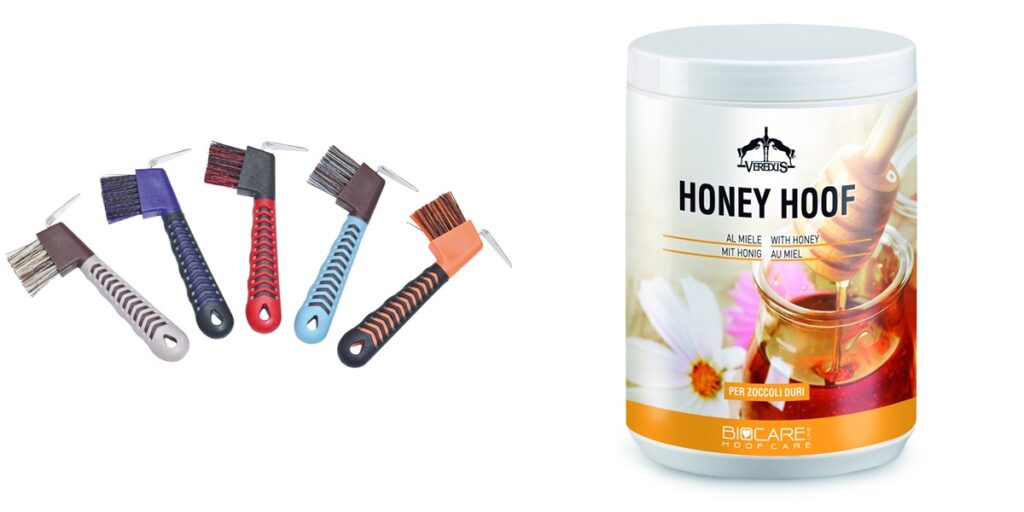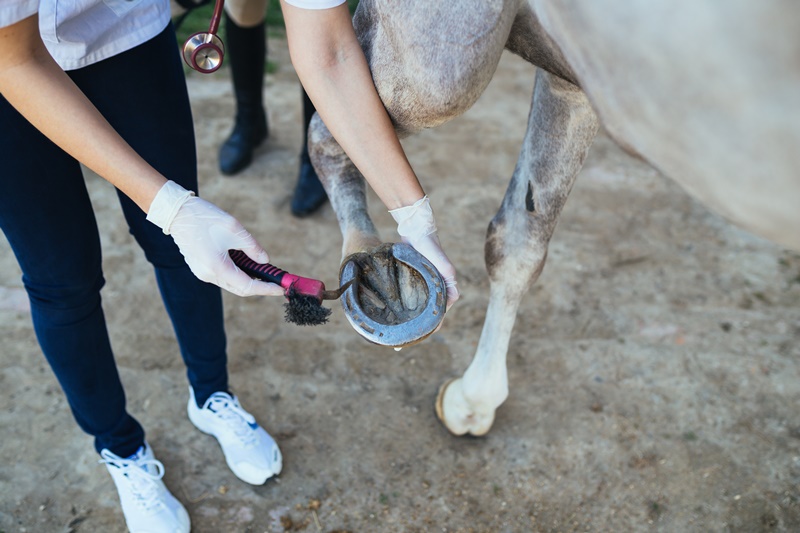Have you ever come across the statement that horseshoes bring good luck? Perhaps every horseperson has at least one piece of this good luck catcher at home.
Have you ever noticed that horses in a carriage have large and heavy horseshoes? Have you wondered why they need these shoes and what is their purpose? Wild horses don’t have horseshoes, so why are they so commonly used?
What is a horseshoe?
Horseshoes are U-shaped steel pads that are attached to the bottom of the hoof. They provide protection and insulate the hoof from direct contact with the ground.
Farriers are hoof experts. They are responsible for the proper shoeing of the hoof and matching the size of the horseshoe to the size and shape of the hoof. Finding a good farrier is a must! Without legs there is no horse – so don’t skimp in this area.
To keep your horse’s hooves in good shape, it is necessary to regularly (every 6-8 weeks) call the farrier for a visit, at which the overgrown part of the hoof will be cut out.
Why do horses wear horseshoes?
Hooves consist mainly of keratin and grow just like human fingernails. Horses in the wild thrive on diverse ground, but domesticated horses are forced to walk on ground that is not natural for them, such as asphalt. Horses can wear down the hoof wall too quickly or trip over protruding elements, so in certain cases horseshoes may be necessary.
As we previously mentioned, horseshoes are attached to the bottom part of the hoof. Failure to properly attach the sole can result in discomfort and pain of the animal.
Why wild horses wear no horseshoes?
Wild horses travel on different types of terrain (field, forest, mountainous or muddy), so their hooves are more durable and abrasive when walking on different types of ground. Do wild horses need special shoes? NO!
Wild horses have hooves that harden with age to be able to traverse in all conditions. Moreover, they wear down naturally, so the hooves are in excellent condition without any farrier visits!
What are horseshoes made of?
Horseshoes are usually made of alloys of various metals, such as steel and aluminum. Rarely, you will also find horseshoes made of rubber or plastic.
Steel horseshoes are most often chosen due to their durability. The toughness of the horseshoe is particularly important for sport horses whose legs are subjected to heavy exertion.
A blacksmith selects the type of horseshoe depending on the material and needs of the particular animal. It should be mentioned that not all horseshoes are the same. You can find orthopedic (corrective) and traditional models.
Are horseshoes necessary?
There are several schools of thought that horseshoes should be used for domesticated horses, while others are firm opponents of them. This is certainly a subject that requires specialized knowledge and skills.
In some equestrian disciplines, horseshoes are actually necessary, for example, on grassy ground, and additionally horses working in carriages or tree felling require the hoof to be reinforced with a thick and professional horseshoe. In some conditions and leg deformities, orthopedic shoeing is possible, i.e. shoeing that is able to guide the hoof (or bones!) into the correct position.
How to take care of hooves with horseshoes on them?

Hooves will not be healthy if you do not provide them with proper care. Whether a horse walks shod or not, the condition of the hoof box should be checked regularly. Hooves are stressed for most of the day, and there is a constant pressure on the hooves when horses are sleeping standing up.
In order to keep the hoof in proper condition, it is necessary to provide the horse with proper supplementation, such as biotin, and treatment with lubricants or oils.
Here are some steps to take proper care of your horse’s hooves:
- Choose the services of only good and trusted farriers
- Regularly check the condition of the hoof and hoof fibula
- Call the farrier every 6-8 weeks
- You can put the horseshoes back on, but carefully check if they are evenly worn down
- Make sure your horse’s movement is not restricted in any way after the horseshoes are put on
Conclusion
The decision to put on horseshoes is up to the owner, but it is worth considering all the pros and cons of this decision to ensure that the horse will not get hurt, and that the extra weight placed on the hooves will not cause discomfort.

